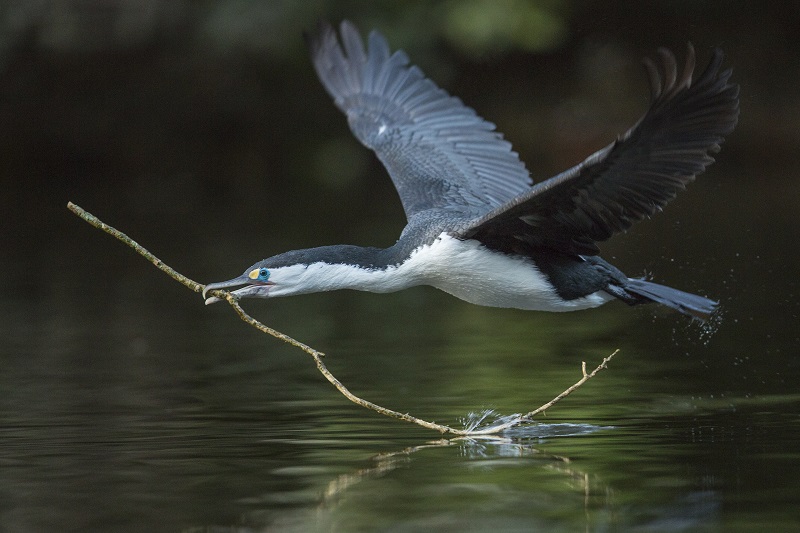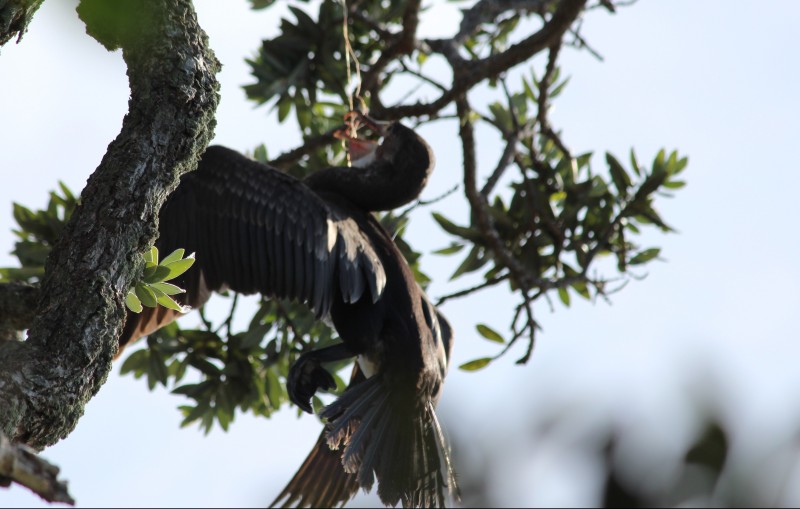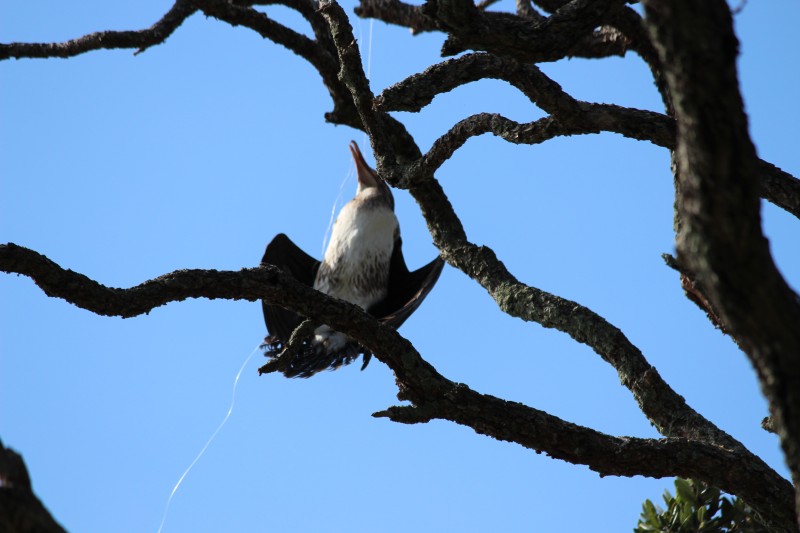Snagged shag a reminder to minimise seabird by-catch
This post contains graphic images that some readers may find disturbing.
Photos of a shag that was snagged in a tree after it became tangled in recreational fishing line are a shocking reminder to make an effort to minimise seabird by-catch when you’re out fishing this summer.
Shags are undoubtedly the most persistent and frustrating birds when you are out fishing. They quickly learn that fishers can provide a relatively easy feed and will dive underwater, performing acrobatics to obtain a meal.

A pied shag carries sticks to its nest at Zealandia in Wellington (Photo by Chris Helliwell)
You may be trying to drop your bait or reel in a fish, but repeatedly the shag takes what is on your hook. In doing so, they occasionally get hooked. If you cut the line, but leave it long and trailing, it’s likely to tangle with other birds, or objects like a tree resulting in a nasty prolonged death by hanging. Such was the fate of this shag entangled by fishing line being cut to ‘free’ the bird.

A dead shag hangs by excess fishing line (Photo by Rod Neureuter)

A dead shag hangs by excess fishing line (Photo by Rod Neureuter)
Many assume that recreational fishers rarely catch seabirds. However, a survey of fishermen at boat ramps in 2008 found that 47% of recreational fishers recalled having seen a bird being caught, while a report from Dragonfly Science shows there are 30 interactions between seabirds and recreational fishers each day. While most birds (77%) are released unharmed; even the death of a single bird can have an impact on population numbers – especially when it’s an adult with chicks to feed.
Every year, 16.5% of New Zealanders go salt water fishing and log 4.8 million hours in the Auckland region alone. It’s not just about how many birds you see getting tangled or hooked, but the pressure of over 700,000 people on the water on seabird populations.
If you do snag a bird, there are things you can do to save it. Start by carefully reeling it in or take the boat towards the bird. Scoop the bird using a net, and carefully wrap it in a dry towel (watch out for those sharp beaks and claws). If the bird has ingested the hook and line, you can safely cut it near to where it entered, so no line is left trailing. Otherwise carefully untangle the line or if the hook has pierced the bird remove the hook using pliers. To remove the hook, cut or flatten the barb and feed the post back through the wound. Release the bird at the waters level, or if it is exhausted, put it in a box or quiet place in the shade to recover.
Please be careful if birds are about when you are fishing. Keep your bait stored away out of sight so birds are less likely to see or smell it. Drop your bait or burley quickly and below the diving depth of birds (at least 6m). Consider moving to another place if birds are frustratingly persistent. Remember too, to take all your rubbish home with you (fishing tackle, bait bags, drink bottles etc.), as plastic rubbish is notorious for endangering birds, turtles, and marine mammals.
